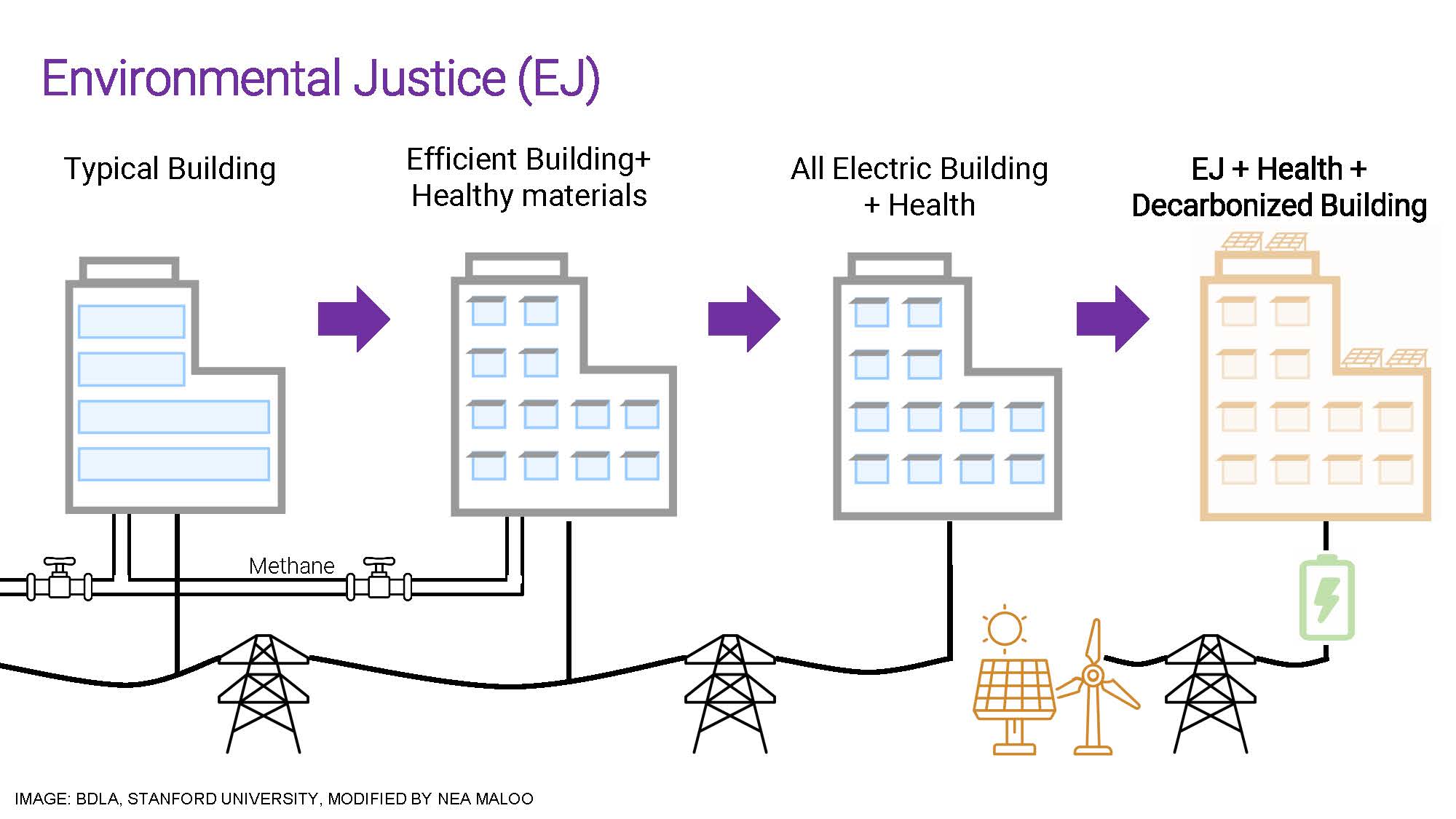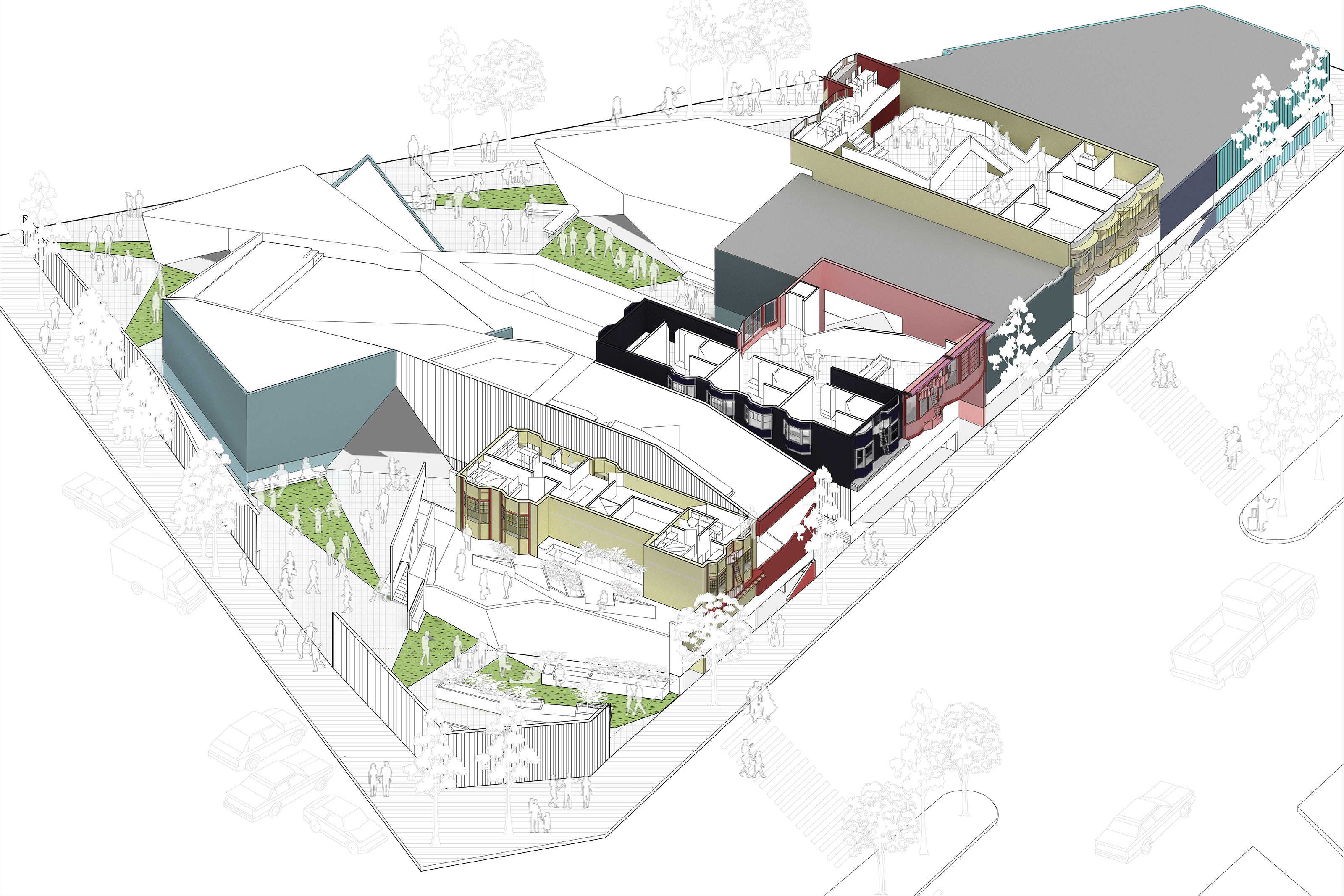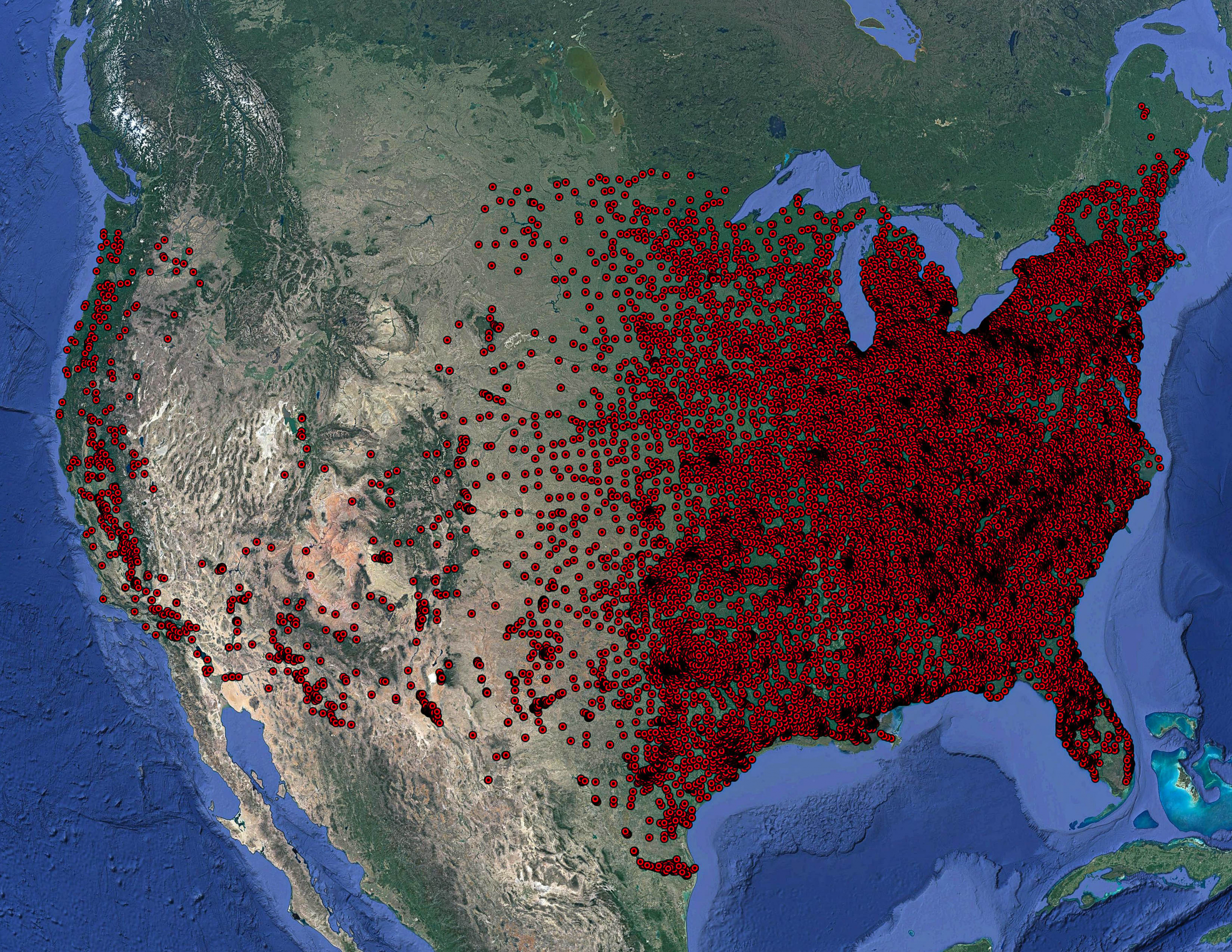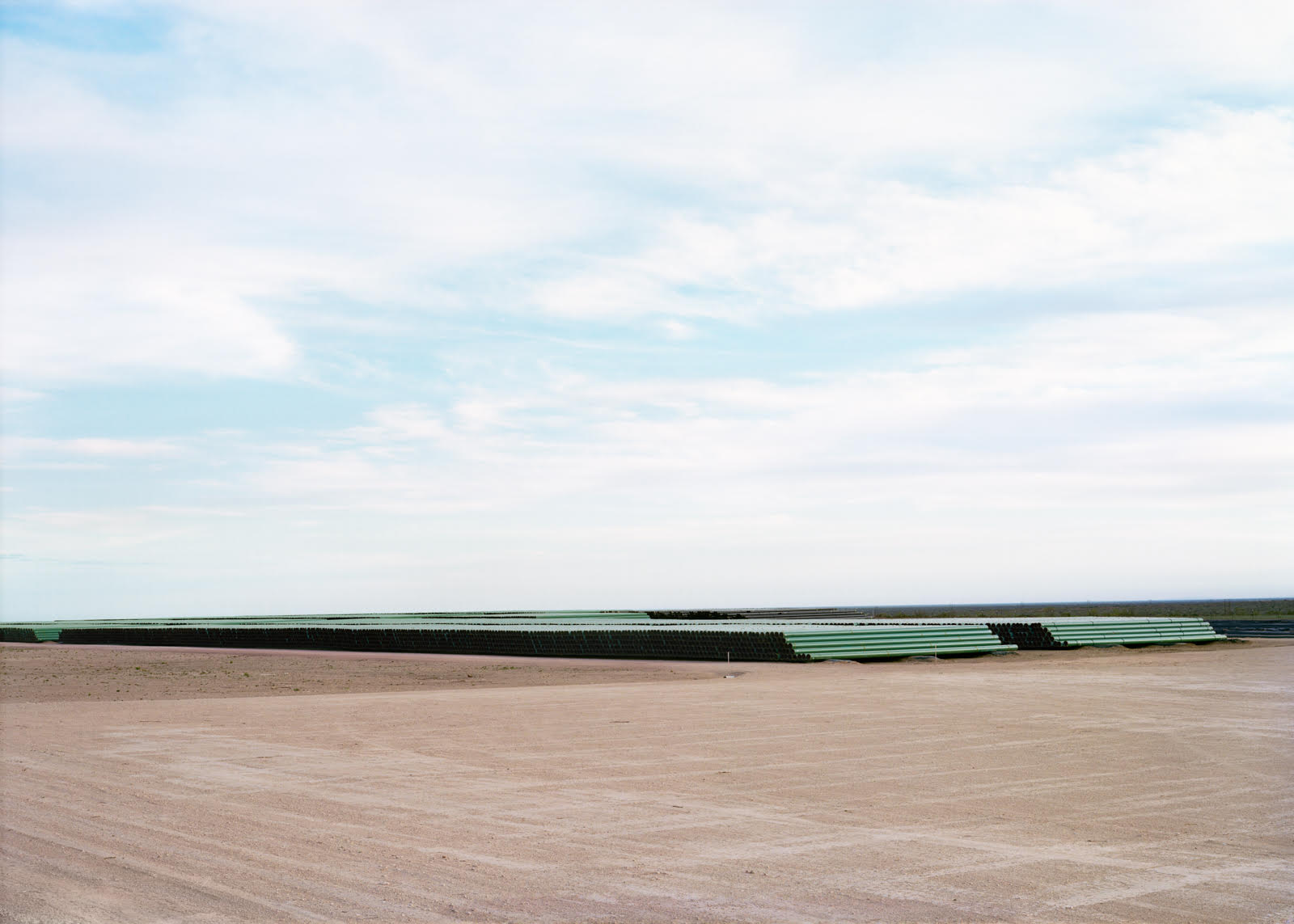2022 Winners
2022 Course Development Prize Winners
in Architecture, Climate Change, and Society
A course proposal competition by Columbia University’s Temple Hoyne Buell Center for the Study of American Architecture and the ACSA.
2022 Course Development Prize Winners
Overview
Columbia University’s Temple Hoyne Buell Center for the Study of American Architecture and the Association of Collegiate Schools of Architecture (ACSA) announce the winners of the 2022 Course Development Prize in Architecture, Climate Change, and Society. These innovative courses will be taught at architecture schools across North America in the coming years.
The jury selected five courses to receive a cash prize and support to lead their course at their host institution within the next two years. In addition the jury selected two courses to receive honorable mentions, for their impactful courses. The five winning course proposals will be presented at the ACSA 110th Annual Meeting.
Nea Maloo, Howard University
The Environmental Justice (EJ) + Health + Decarbonization will be a new inter-disciplinary course in the College of Engineering and Architecture, Howard University, for architects, engineers, and environmental studies major students. The course aims to put sustainable building practice at the center of environmental health, justice, and social equity. This course is intended to equip the students with the knowledge of building decarbonization and environmental justice, to be the future leaders in sustainability.
Globally, the embodied carbon emissions from the building sector alone produce 11% of global emissions and has huge impact on the environment. It is also evident that climate change has differing social, economic, health, and other adverse impacts on underprivileged populations. Under the broad umbrella of climate justice, the inter-disciplinary education will offer an overview of the use of technology tools, including the energy simulation modeling, collected data, healthy building material and design approaches in architectural design. Additionally, the students will learn theory and practice of building decarbonization as foundational approach to environmental justice. The goal is to design buildings with holistic strategies with Decarbonization and healthy building material which promotes the climate justice within the architecture profession to the broader local and global community.
Image Credit: BDLA, Stanford University, modified by Nea Maloo
Janette Kim, Brendon Levitt, & James Graham, California College of the Arts
Decommodifying Ownership is a proposed cluster of coordinated courses at the Architecture Division at California College of the Arts that bridges across design studio, building technology, and history and theory curriculum streams in the B.Arch, M.Arch and Master of Advanced Architectural Design programs. These three courses will reflect on colonial legacies of dispossession instituted by the enclosure of land and the dislocation of the byproducts of extractive economies. In response, they will ask how the decommodification and commoning of land and resources can recapture energy, water, materials, and nutrients—all to sustain regenerative economies in communities whose labor and knowledge have long been mined for the creation of wealth. These courses will highlight their own unique methodologies—with an emphatic belief that each curricular track is a site for both conceptual and pragmatic investigations—while identifying sites for cross-pollination. In this way, the goal is to model speculative, new techniques for interdisciplinary architectural practice that is ever-more critical in the face of climate change.
Image Credit: Carlos Garcia and Yue Liu, project diagram for the Reframing Property studio taught by Janette Kim, fall 2021.
Lindsey Krug, University of Wisconsin-Milwaukee
Sarah Aziz, University of Colorado Denver
Mono-Poly-Dollar is an interdisciplinary research and design studio, operating at both the University of Wisconsin-Milwaukee (UWM) and the University of Colorado Denver (CUD), that uses Dollar General Corp (DG), the largest and most influential of the American dollar store triumvirate – Family Dollar, Dollar Tree, and Dollar General – to examine the country’s environmental, economic, and racial fault lines, and highlight the understudied small-box vernacular typology as a weapon of discourse and agent of climate activism.
Milwaukee, Wisconsin, and Denver, Colorado are geographically poised to document the distribution of Dollar General’s presence in the U.S. as they trisect the drastic gradient from the densely populated DG-landscape of the American East, Midwest and South, to the sparsely populated DG-landscape of the American West. The course requires students to address the subject matter neutrally and arrive at socio-spatial positions and projections by traveling to a cross-section of the 17,000+ DG stores and distribution centers across the country and see firsthand how the retail empire affects large-scale commercial practices and mom-and-pop-corner-shop small-scale domestic realities.
Given its geographic scope, even a small shift in the invasive dollar store’s response to the climate crisis can have a large impact, and by critiquing the organization’s commercial, agricultural, and architectural strategies, students propose ways DG can provide an antidote to the silent crisis they contribute to.
Image: Sarah Aziz and Lindsey Krug, “U.S. Dollar General Store Locations,” via Google Earth, 2021
Brittany Utting, Rice University
Geology is a conception of the planet’s surface as thick, resource-rich, and energy-latent, forming slowly in the “deep time” of the earth. Laced within its dense layers of rock and shifting plates, the crust contains the raw materials and carbon fuels of the technosphere: bands of iron ore, veins of mineral deposits, seams of coal, and vast fields of oil.
Our everyday worlds are sourced from these geologies—fracking, cracking, mining, drilling, processing, and burning—feeding a supply chain essential to the production and powering of the built environment. Critically, the materials themselves have specific qualities and attitudes, producing a complex infrastructure of capital, energy, and heat. Yet while these geologies constitute the substructure of carbon modernity—determining its urban scales, circulatory flows, and organizational forms—they also devastate landscapes, bodies, and climates.
Deploying spatial and material tactics to intercede in these extractive processes, this studio seeks to trouble the persistence and durability of the hydrocarbon toward a deeper conception of geology: a planetary assemblage of landscapes, ecologies, organisms, technologies, and atmospheres. Learning from Anna L. Tsing’s concept of the “liveliness” of materials, Deep Geologies looks to the entanglement of extraction and the built environment to imagine new architectures for terrestrial care. Working in the context of Texas, this studio imagines how architecture can participate in a just transition to a post-carbon future, asking how the built world can more radically engage with agendas for environmental justice and geological repair.
Image Credit: Victoria Sambunaris – Untitled (Pipes), Monahans, Texas – 2012
Yong Huang & Andreas Luescher, Bowling Green State University
Sujata Shetty, University of Toledo
Climate change in Toledo, Ohio once a thriving part of the constellation of cities supporting Detroit’s auto industry, is already noticeable through an increase in average air temperatures, with predictions that they will continue rising (City of Toledo, 2021). Region-wide, climate change is projected to increase the risk, intensity and duration of temperature extremes and that has certainly been true in the city as well (GCA, 2020). One major contributor to these prolonged high temperatures are Urban Heat Islands (UHIs), urban areas that are significantly warmer than their surroundings chiefly because of concentrated heat emitted from the built environment, vehicles, and industrial land uses. As in other old industrial cities, Toledo’s urban areas suffering from the heat island effect are expected to be most affected by heatwaves, putting the city’s low-income and elderly residents most at risk.
The proposed interdisciplinary seminar and studio will focus on the intersection between heat events and the structure of the City of Toledo, socio-economic and physical. The main question we ask is: how can heat mitigation architecture and planning interventions further social equity? Our aim is to examine the connection of nature to human experience, and to integrate the wellbeing of individuals with the design of healthy public spaces and neighborhood-wide environments. The joint venture will advance and bolster climate literacy in Northwest Ohio.
References: City of Toledo (2021) Climate change Vulnerability Assessment for Stormwater
GCA (2020) Global Center on Adaptation: Temperatures in the Great Lakes are rising and putting the vulnerable at risk
Image: Toledo Green Spaces and Heat Island Analysis
TOURISM AS ENVIRONMENTAL DISASTER
Vulnerable Landscapes and Vulnerable Populations on the Atlantic Coast Barrier Islands
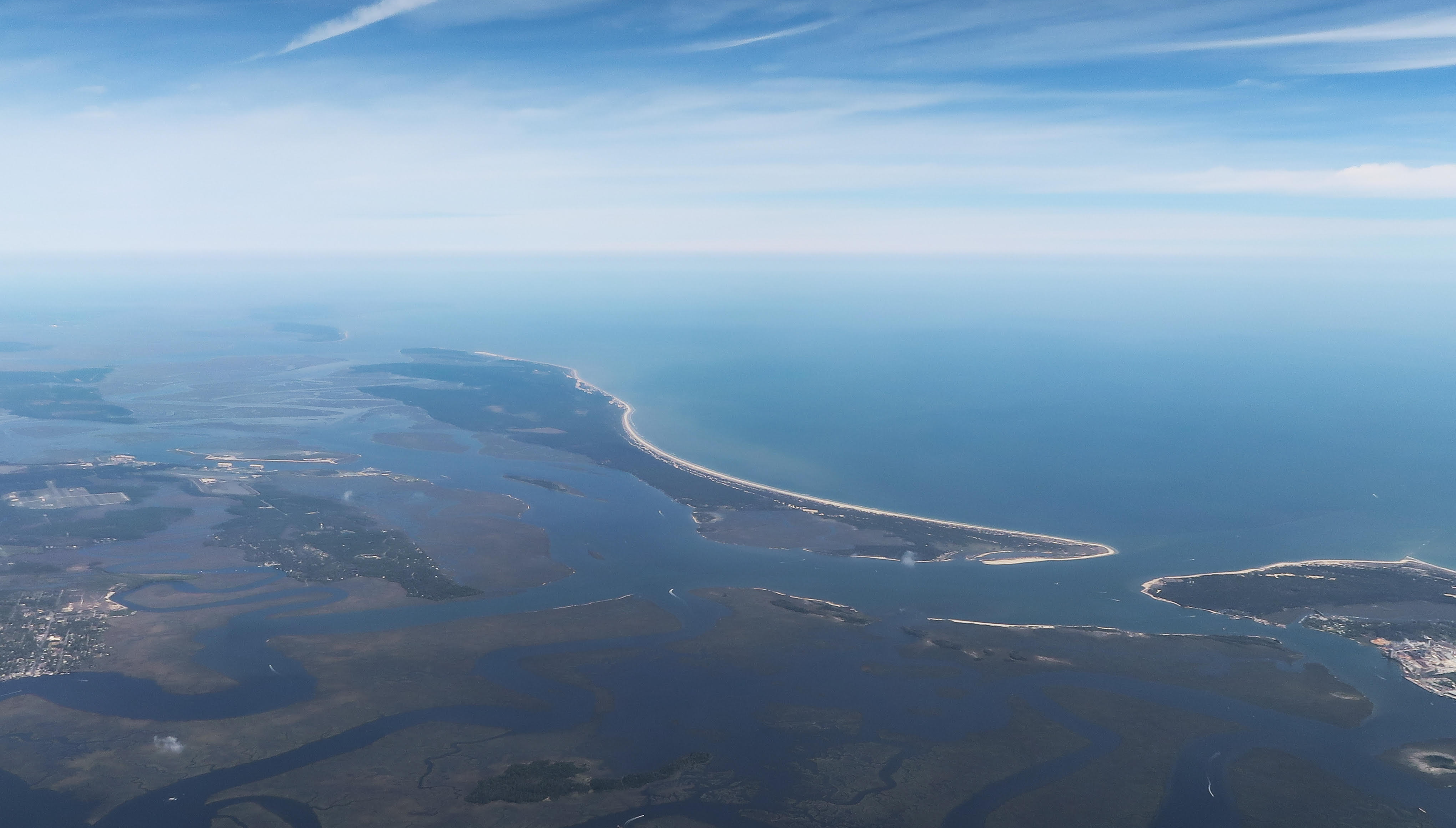
David Franco, Ulrike Heine, Andreea Mihalache and George Schafer, Clemson University
Barrier islands are vulnerable landforms critical for the protection of coastal ecosystems and communities, whose rich vegetation merges with water in marshlands and beaches. During the Jim Crow era, they were the safe havens of self-sustaining Gullah-Geechee communities from the Carolinas to South Florida, until when a massive invasion of vacation homes, hotels, and oversized tourist infrastructure began to displace them during the 1950s. Bringing together design, theory, and technology, this course addresses the abusive tourist practices that have shaped the Atlantic coast as we know it, through alternative approaches to tackle these landscapes’ social, environmental, and spatial challenges.
Image: Tourism as Environment
ENERGY COLLECTIVES
TOWARDS A SELF-SUSTAINING NEIGHBORHOOD
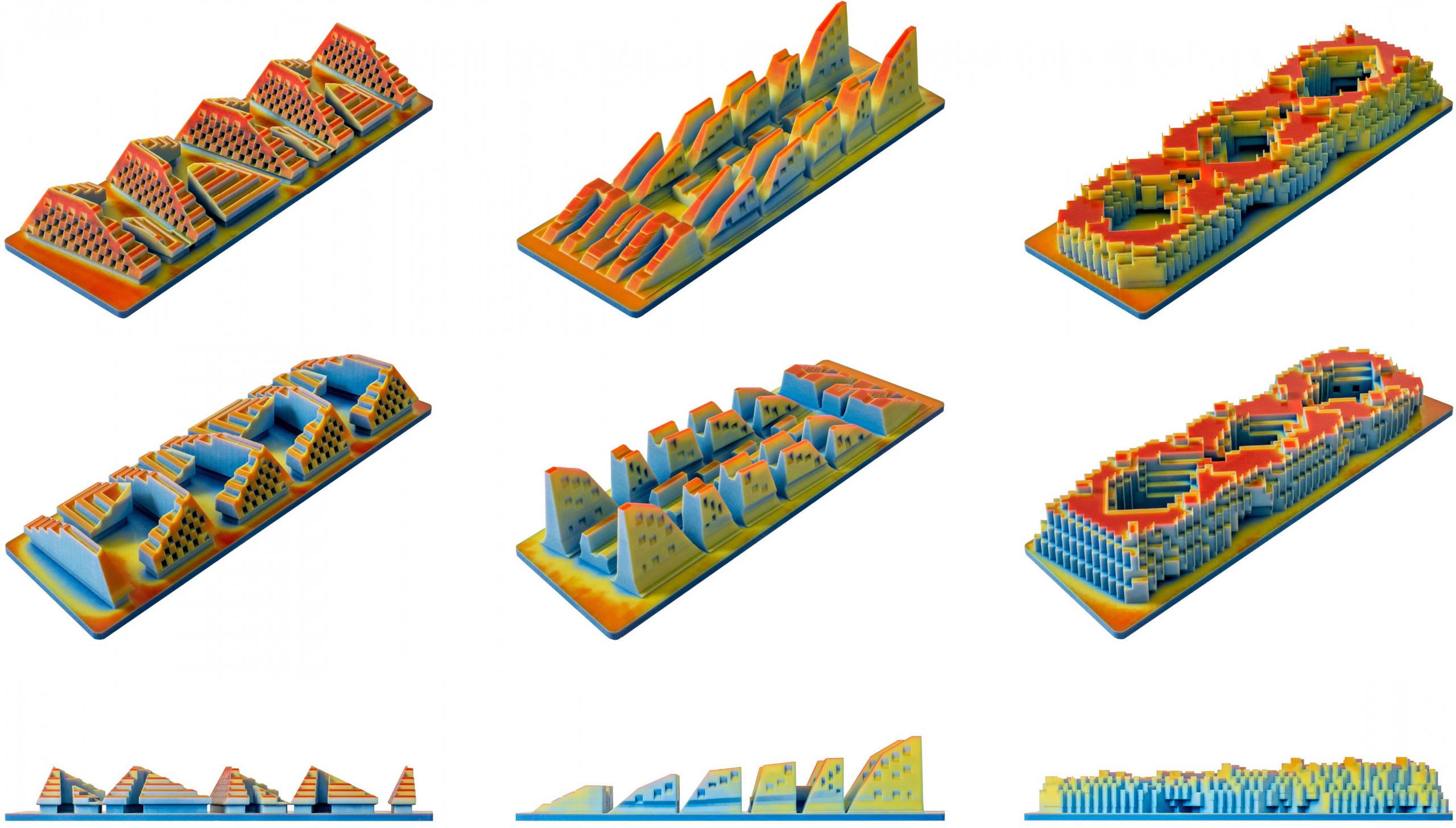
Lawrence Blough, Pratt Institute
Simone Giostra, Politecnico di Milano
Our proposal calls for radical new models of inhabitation, production, and protection of vital ecosystems by pairing objective environmental analysis with speculative architectural scenarios. A model for a self-sufficient settlement located on the city’s periphery will integrate overlapping scales of production and conservation. Animated by new modes of co-living, working and shared resources, it will provide a roadmap for future growth of the city and its environs. Energy performance in buildings is form dependent—addressing resource scarcity and environmental degradation demands a new design aesthetic and formal approach based on ecological inputs and necessity. The four vital infrastructures of Food, Energy, Water and Waste (FEW2) will be investigated for their design agency through a paired research seminar and design studio in order to effectively tackle the climate and energy crisis.
Image: City block housing proposals mapping yearly solar radiation – IDC funded studios. Blough & Giostra, 2019-21
Are you interested in joining a network of faculty teaching:
Architecture, Climate Change, and Society?
Temple Hoyne Buell Center for the Study of American Architecture
Columbia University’s Temple Hoyne Buell Center for the Study of American Architecture was founded in 1982. Its mission is to advance the interdisciplinary study of American architecture, urbanism, and landscape. A separately endowed entity within the Graduate School of Architecture, Planning, and Preservation, it sponsors research projects, workshops, public programs, publications, and awards.
In recent years, the Center has convened issue-oriented conversations around matters of public concern, such as housing, that are addressed to overlapping constituencies including academics, students, professionals, and members of the general public. The Buell Center’s research and programming articulate facts and frameworks that modify key assumptions governing the architectural public sphere—that is, the arena in which informed public analysis and debate about architecture and urbanism takes place. Buell Center projects utilize a variety of formats, such as specialized academic conferences, small meetings, larger public events, and publications, depending on the issues and audience at hand. In all cases, they offer a context for the study of American architecture that brings underlying issues to light and enables architecture’s various interconnected publics to gain a greater understanding of its cultural significance.
The Center’s project, “Power: Infrastructure in America,” which framed its support for the Course Development Prize, challenges participants to think about how infrastructure relates to life across a series of intersecting concerns, including democratic governance and climate justice. For more information, see power.buellcenter.columbia.edu.
Association of Collegiate Schools of Architecture
The mission of the Association of Collegiate Schools of Architecture is to lead architectural education and research.
Founded in 1912 by 10 charter members, ACSA is a 501(c)(3) nonprofit association of over 200 member schools in several categories. These include full membership for all accredited programs in the United States and government-sanctioned schools in Canada, candidate membership for schools seeking accreditation, and affiliate membership for schools for two-year and international programs. Through these schools, over 5,000 architecture faculty are represented.
ACSA, unique in its representative role for schools of architecture, provides a forum for ideas on the leading edge of architectural thought. Issues that will affect the architectural profession in the future are being examined today in ACSA member schools. The association maintains a variety of activities that influence, communicate, and record important issues. Such endeavors include scholarly meetings, workshops, publications, awards and competition programs, support for architectural research, policy development, and liaison with allied organizations.
ACSA seeks to empower faculty and schools to educate increasingly diverse students, expand disciplinary impacts, and create knowledge for the advancement of architecture.


 Study Architecture
Study Architecture  ProPEL
ProPEL 